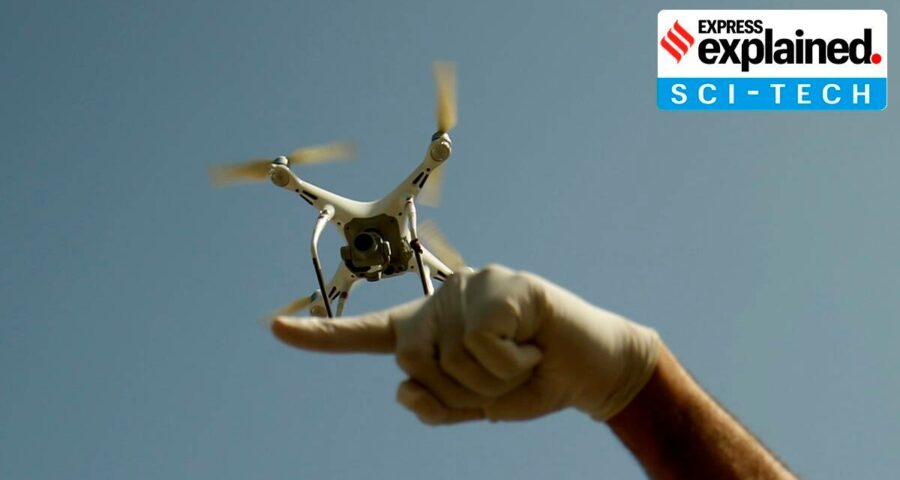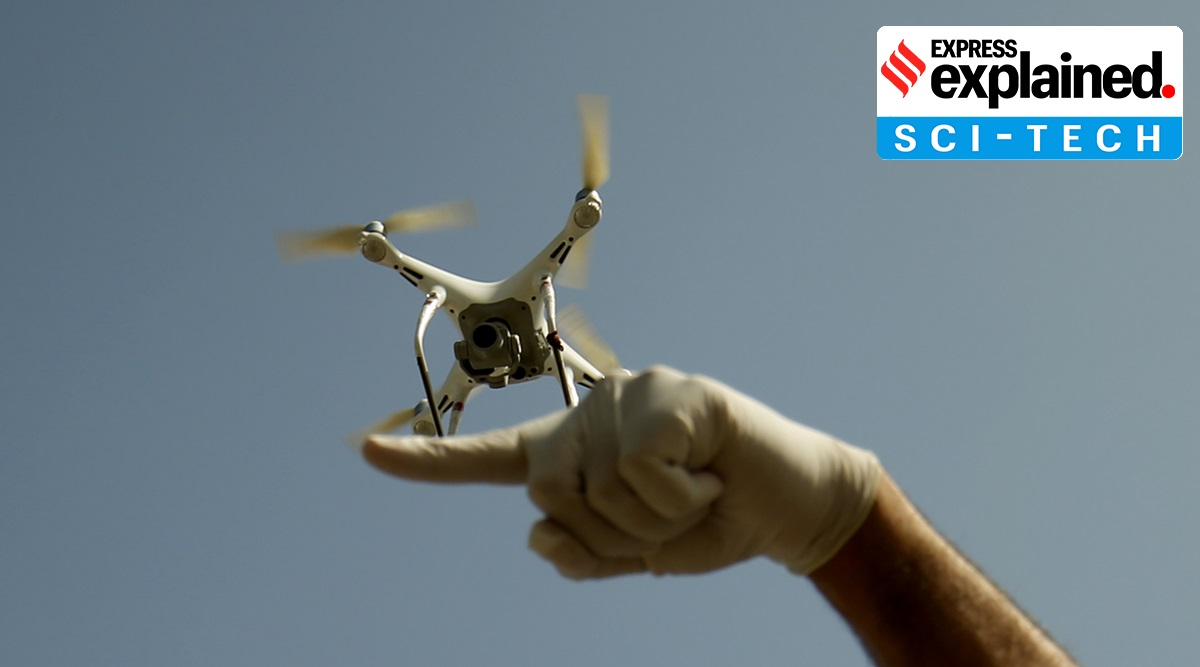The central government has notified the Drone Rules 2021, a much more liberalised regime for unmanned aircraft systems than what existed previously. What are the relaxations, and why are they significant?
The central government has notified the Drone Rules 2021, a much more liberalised regime for unmanned aircraft systems than what existed previously. Under the new rules, a draft of which was released in July, several requirements and approvals have been abolished and this is expected to make drone operations simpler for civilian drone operators.
What are the main changes from the previous framework that regulated drone operations?
To begin with, the total number of forms that were to be filled has been reduced from 25 to five, and the total number of fees that are to be paid before being able to operate drones has been reduced from 72 to just four.
The various approvals that were required, such as unique authorisation number, unique prototype identification number, certificate of manufacturing and airworthiness, certificate of conformance, certificate of maintenance, import clearance, acceptance of existing drones, operator permit, authorisation of R&D organisation, student remote pilot licence, remote pilot instructor authorisation, and drone port authorisation etc have been abolished.
In addition to this, the quantum of fees, which was earlier linked to the size of drone, has been reduced and delinked from the size. For example, the remote pilot license fee, which was Rs 3,000 for a large size drone, has been reduced to Rs 100 — which is the fee for all categories of drones.
What are the other various relaxations?
The Civil Aviation Ministry said the Digital Sky platform that it envisaged earlier will be developed as a single-window platform for the clearances that are required. To add to this, an interactive airspace map will also be displayed on the platform that will show the three zones — yellow, green and red. These zones have been demarcated to tell drone operators where they can and cannot fly their aircraft systems. Even in these zones, the government has significantly liberalised the rules. For example, the yellow zone, which was earlier a 45 km zone from the airport perimeter, has now been reduced to a 12 km zone, meaning that outside of a 12 km radius of an airport perimeter, it would be a green zone, where drone operators no longer need permission to fly.
Are there security relaxations too?
Yes. Earlier, prior to issuance of a registration or licence, a security clearance was necessary. Now, the government has done away with the need for this clearance. Also, on the part of companies operating drones, foreign ownership has been allowed. However, the import of drones will continue to be regulated by the Directorate General of Foreign Trade.
Significantly, the coverage of these rules has been increased to cover drones up to 500 kg in weight from 300 kg earlier, thereby bringing drone taxis under the fray too.
What is the significance of these new drone rules?
The liberalised regime for civilian drones mark a clear shift in policy by the government to allow operations of such drones and highlights the government’s intent to allow the use of drones while at the same time ensuring security from rogue drones through the anti-rogue drone framework that was announced in 2019. The draft rules for the new policy were announced back in July, just weeks after a drone attack took place at an Indian Air Force base in Jammu.
“The new Drone Rules usher in a landmark moment for this sector in India. The rules are based on the premise of trust and self-certification. Approvals, compliance requirements and entry barriers have been significantly reduced,” Prime Minister Narendra Modi said in a tweet.
“The new Drone Rules will tremendously help start-ups and our youth working in this sector. It will open up new possibilities for innovation & business. It will help leverage India’s strengths in innovation, technology & engineering to make India a drone hub,” he added.
Newsletter | Click to get the day’s best explainers in your inbox
Source: Read Full Article


